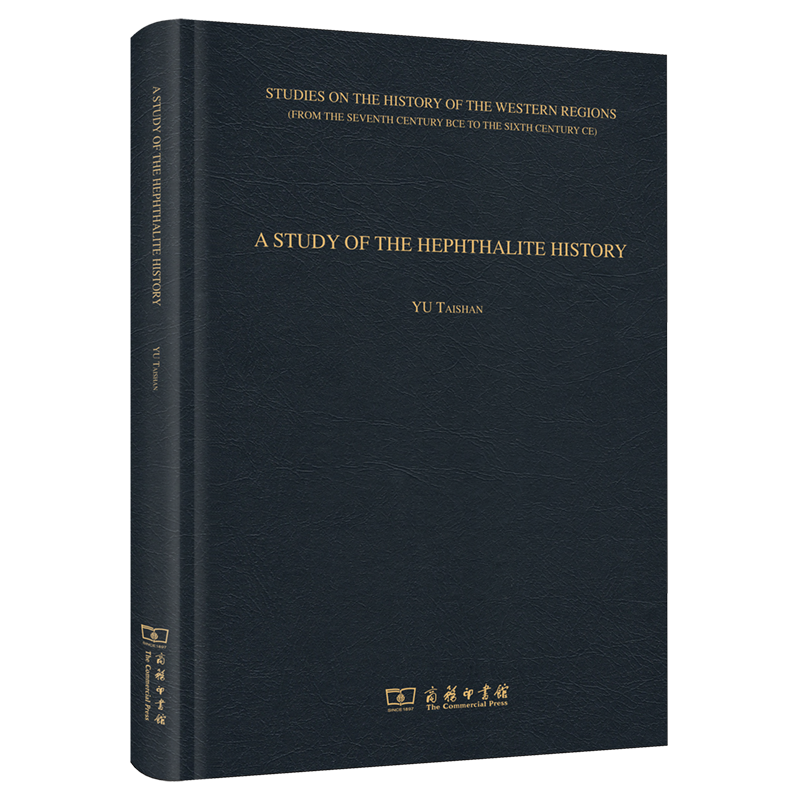
出版社: 商务印书馆
原售价: 188.00
折扣价: 129.72
折扣购买: 嚈哒史研究(英文版)/西域上古史研究
ISBN: 9787100189699

余太山先生,是著名的中亚古史研究奠基性学者。毕业于中国社会科学院研究生院历史系,后于历史所任职,1993年起为研究员,曾任中外关系史研究室主任。专治古代中亚史、中外关系史。现为中国社会科学院荣誉学部委员。
INTRODUCTION The Hephthalites originated from the area north of the Great Wall. Around the beginning of the 370s CE, the Hephthalites crossed the Jinshan 金山 Mountains (i.e., Altai Mountains) and moved west to Sogdiana, and controlled the valley of the Zarafshān River. They were subject for a time to the Rouran 柔然 because they remained weak down to the beginning of the fifth century CE. The Hephthalites crossed the Amu Darya, and invaded the Sasanian Empire in the mid-420s CE, but were repelled by Bahrām V [420-438]. At the end of the 430s CE, the Hephthalites moved south to Tokhāristan, defeated the Kidārite Kushāns who were entrenched there, and banished King Kidara. The Hephthalites then invaded westwards the Sasanian Empire from Tokhāristan, at the time when Yazdgird II [438-457] was on the Sasanian throne. This was the prelude to more than a century of war between the Hephthalites and Persians. The Persian troops successfully held off the Hephthalite invasion for the first decade or more of this period, and even switched from the defensive to the offensive in the twelfth year [449] of Yazdgird II’s reign. However, four years later, the Hephthalites utterly defeated Yazdgird II, not only cementing their rule over Tokhāristan, but also seizing some of the eastern territory of the Sasanian Empire. At the time when they defeated Yazdgird II, the Hephthalites crossed the Hindu Kush, and then proceeded to subject all the states south of the mountains. The Hephthalites thereupon waged war against the Gupta Empire in India, but were repelled by Skandgupta [c. 455-470] who had just ascended the throne. After Yazdgird II died, his two sons contended for the throne. The second son won and ascended the throne as Hurmazd III [457-459]. The eldest son Pērōz [459-484] fled in panic to the Hephthalites to seek asylum and then took the throne by dint of their military prowess. 本丛书的研究范畴是公元前六世纪至公元六世纪的中亚史。 这一时段的中亚史有各种原始资料,其中汉语资料无疑是最关键的。可以说,没有汉语资料,这一时段的中亚史无法构建。西方(包括印度、俄罗斯)学者研究这一时段的中亚史已有一个半世纪,成绩可圈可点。其主要缺点是没有充分利用汉语史料。弥补这一缺憾的是日本学者,从白鸟库吉算起,至少已有四代学者投身这一时段的中亚史研究,其主要特色正是利用汉语史料。可惜的是,日本学者很少英译自己的论著,西方学者又多不习日语,因而日本学者的有关成果罕见引用。余氏的研究不仅填补了中国中亚史研究的空白,而且比日本学者更充分地利用了汉文史料,且不说余氏以汉语为母语,对汉语史料的理解应胜过日本学者。 该文集的出版则有助于西方学者理解和运用汉语史料,使国内中亚史的研究深入世界,继而使得世界史意义上的古代中亚史研究更上层楼。 十本英文著作大部分已在国外发表。著者的译文均经Prof. Victor H. Mair(梅维恒)和Dr. Bruce Doar(陶步思)修改、编辑。两位都是优秀的学者——母语是英语、精通汉语、有丰富的编辑经验、熟悉古代中亚历史,最主要的是极端负责的工作精神。十本英语论著发表时间跨度较大(1990—2017),又经过不同的英语编辑,原译文差异不小,这一次由著者本人历时2年,做了统一译文的工作。嚈哒史研究的经典之作